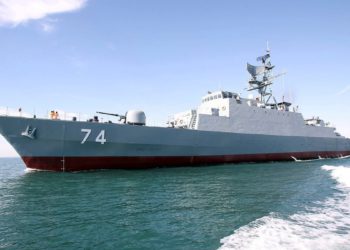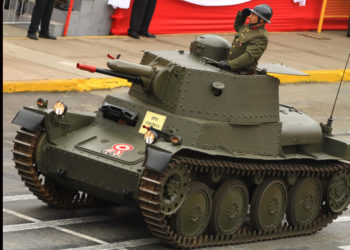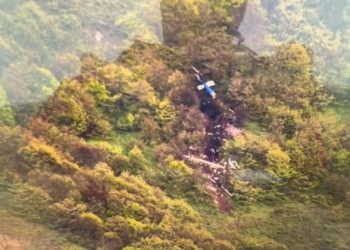Project Convergence: Transforming Future Warfare
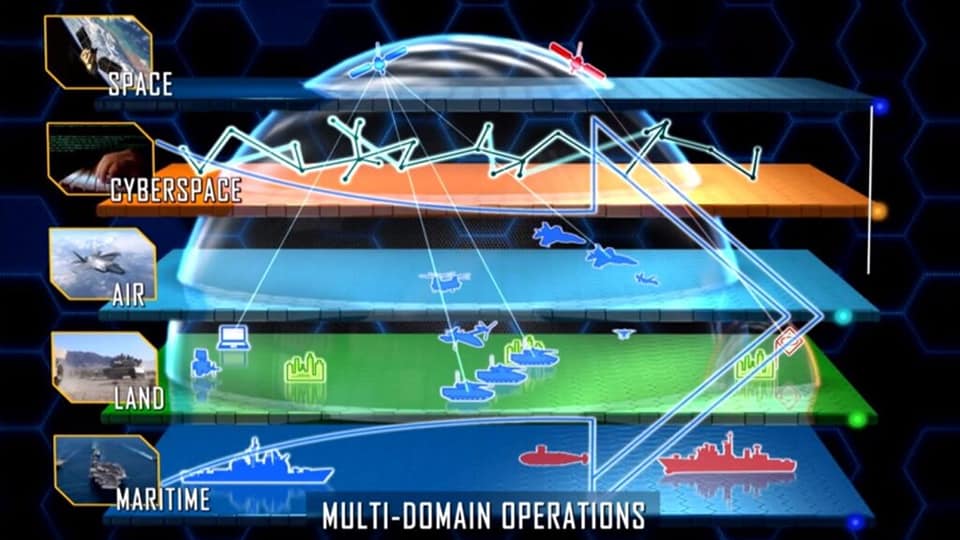
Greetings, this article will briefly outline what Project Convergence is, what it intends to do, how it intends to affect warfare and the war fighting functions, where we are seeing aspects of it being employed and what it means for the future. Please keep any and all thoughts on topic and courteous.
What is Project Convergence?
Project Convergence (PC) is a multi-year exercise that is being conducted by the United States Army (part of a larger umbrella program and effort) to design, shape, inform and then refine how the United States intends to fight a future conflict. Consider it learning and rehearsing how to employ and apply current and emerging technologies in what the anticipated methodologies for a future war and what it may look like.
The critical parts of PC are the learning and rehearsing aspects associated with it. In this phase, which is currently ongoing, these parts will inform decision makers what refinements need to occur, which leads to key performance parameters being adjusted, which also leads to refining identified capability gaps, which then drive operational test and evaluation efforts as well as then ultimately affect contracts and then strategy. All these parts go hand in hand.
PC also helps shape the procurement strategies for material solutions, large-scale procurement purchases, Research and Development funding, geo strategies as well as major end item procurements, etc. In total, it is a monumental shift in waging war as well as how one thinks about war. It is not intended to displace the fundamentals but instead capitalize on the mastery of war and enhance advantages while decreasing and mitigating any identified shortcomings.
The Role of C5ISR in Project Convergence
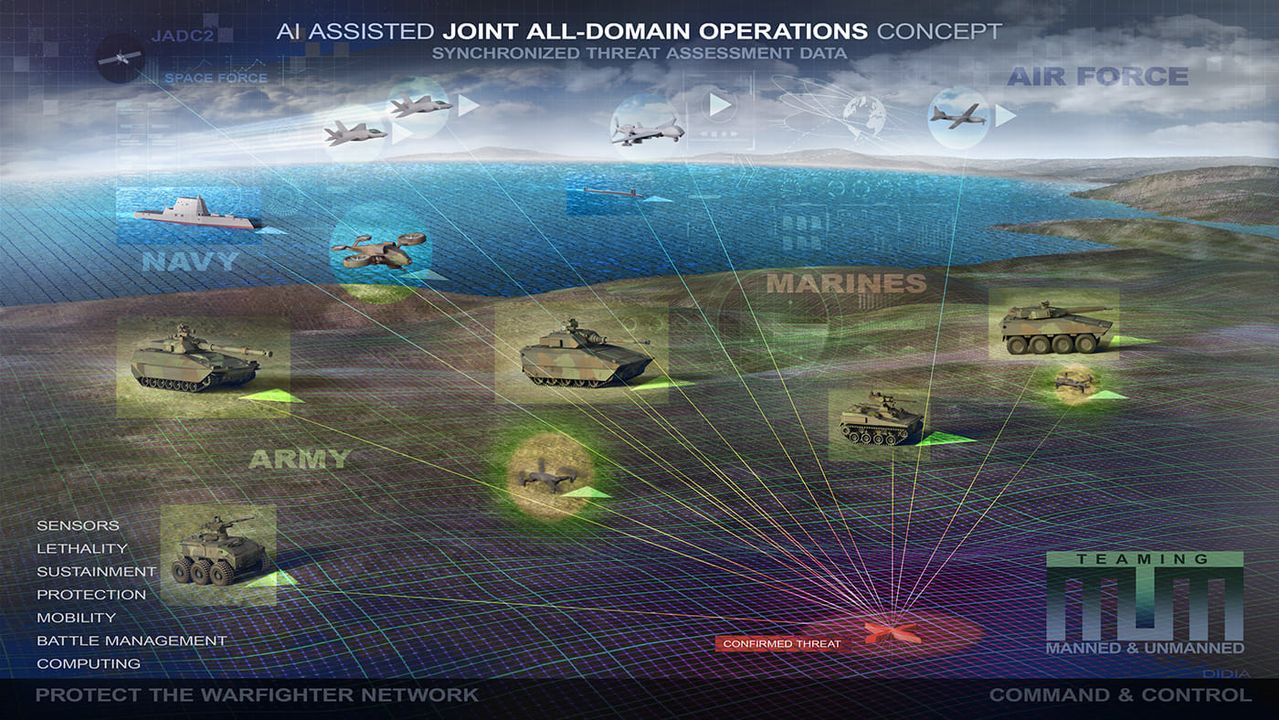
For some, the term C5ISR is familiar; for others, it may not be so commonly understood, and that is okay! The term stands for Command, Control, Communications, Computers, Cyber, Intelligence, Surveillance, and Reconnaissance. Collectively, they all fuse together to provide and generate information that then is turned into actionable products for warfare. The fundamental part of C5ISR efforts is twofold: “Informational Understanding” and translating that understanding into actionable options for the Combatant Commander. What PC does is take all the elements of C5ISR, as well as other supporting nodes, and fuses them all together with the support and augmentation of AI, for the result of actionable products that translate into actionable targeting of an adversary and its war fighting functions in quick order.
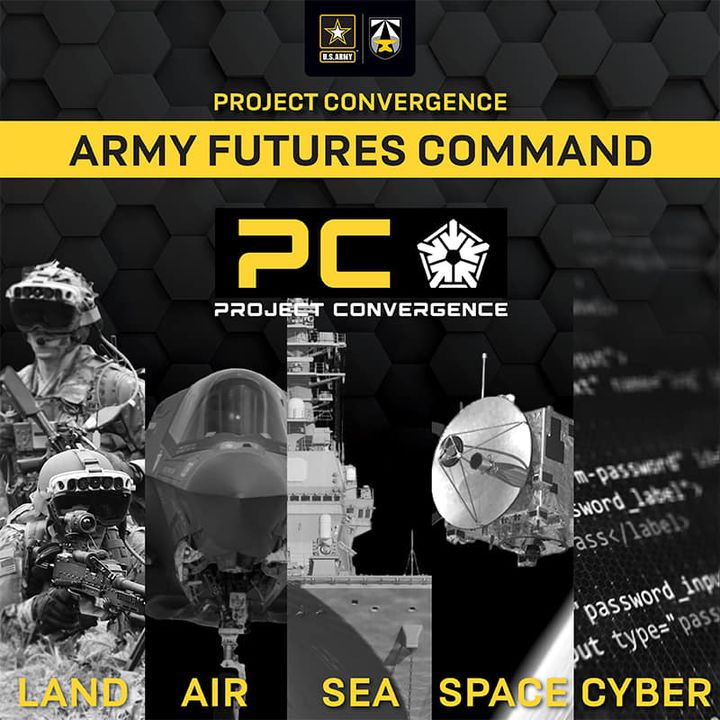
This program of record also ties directly into other US military services and their respective efforts with Informational and Multi-Domain warfare, Net-Centric efforts, and Distributed Operations. This fusion, if you will, allows for a calibrated “God’s eye” view of the operational environment, which is derived from many separate but linked sensors, some in theatre, some outside, and some in space, which in turn leverages AI technology and begins “synergizing” the actionable information into packages and passed along to various “shooters” or units of action for employment. This happens in real-time and near real-time as well. Gone are the days of delayed processes.
How Project Convergence Works
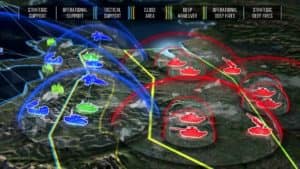
Here are a few scenarios in which it could be employed as intended. First, imagine a ground campaign in the far east of Europe, say near or in the vicinity of the Euro Asian land mass. An invading force has amassed close to 40 thousand troops along a specific axis, replete with hundreds of tanks and infantry fighting vehicles, integrated air defense systems etc. The PC program will gather information during this phase from all the various sensors and forms of sensing that the US possess and with the work of the vast US intelligence assets, specifically those within the DOD, generate a major targeting chart and assign targets to units of action. Once this is done, the decision to execute will be given. What will occur next is only subject to the limitations of what assets are available to be employed at the time. If we modify this scenario to one similar but with an enemy force spread out over thousands of kilometers, the process is the same but merely dispersed as opposed to being concentrated. The results will be the same.
There is also a subsequent option in which an attritional approach can be taken. What this means is that the entire process is dedicated to the identified enemy main effort, perhaps their High Value Targets, maybe logistics, maybe engineering assets, maybe their armored or tank-heavy unit. That’s it. Then in a subsequent fashion, the list or focus changes.
Another scenario is in the maritime domain. In this scenario, the collective effort takes into account the sheer volume of shipping, environmental factors such as waves, rain/squall, neutral warships, unidentified warships/ships, etc. and fuses all the information into an actionable targeting list. This process is generated for the various units of action of a friendly force. Friendly ships, planes and ground units are all “plugged” into this process in real time as well, just like in a ground-based scenario.
Practical Applications of Project Convergence
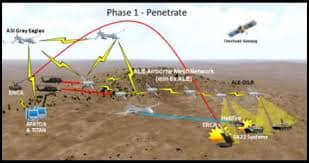
In a more simple detail, what can occur is the following:
Friendly ISR assets (can be anything) are monitoring a very large amphibious landing force sailing towards their objective(s), complete with landing ships, air and surface warfare vessels as well as three aircraft carriers in direct support. In addition to the friendly ISR assets, there are three separate nuclear attack submarines, each approximately 300nm to 800nm away from their target packages, in this case, the amphibious landing task force sailing towards their objective. On order, the three submarines can let loose their entire submerged VLS cells of 72 long-range stealthy anti-surface warfare munitions. Further out, in a very secure air corridor, in an entirely separate direction, there might be a single flight of eight or two flights of four planes, each armed with up to 24 aerial versions of the same long-range stealthy anti-surface munitions that were discussed above, ready to execute their assigned aerial tasking mission. This can be an anti-surface tasking, decoy launches, or other supporting aerial tastings. To go one further, there can be a ground component and a surface component to this as well, perhaps a mobile ground-based company-sized element that has 32 truck-mounted long-range missiles with an anti-surface warfare weapon, as well as a single 96 VLS warship that is sprinting into position to fire off their entire VLS cell load before rapidly retiring to refit in a safe port or elsewhere. Another option could be swarms of medium-ranged, expendable drones in combination with anti-surface munitions, etc. The choices are very robust and just depend on the targeting process and fires plan for any ground-based component (hence the US Army PRSM and Dark Eagle programs).
The critical factor here is that ground-based units can now feed not only information but also targeting data to naval and/or aerial units of action or vice versa, seamlessly and in or near real time. The limiting factors are only magazine sizes and units of action available. The benefit is that PC is not a single-sourced C5ISR asset. It fuses together a multitude of sensors into one, each replete with redundancy as well as specific targeting efforts (not getting more into that). It employs cueing techniques as well as various forms of sourcing think along the lines of MASINT/ELINT/CEMA/SIGINT/TECHINT etc. screw noises from propellers, the whole nine yards are employed. This is a revolutionary game changer in warfare. A real bonafide RMA effort. Below we will outline what it means.
The Implications of Project Convergence
What this means in easy terms is that a fused and synergized force (Informational Dominance) would be able to operate, dispersed and over greater distances and in smaller numbers (Survivability) and mass their fires onto respective High Payoff Targets (Lethality) as they are directed (C3) in real-time and quick succession and also with increased precision.
It is a collective effort centered on C5ISR efforts, that generates a robust tactical and operational picture of the entire Battle Space for the Commander(s), that will employ AI technologies to increase the rapid processing of information into actionable intelligence that is quickly and immediately disseminated to various units of action for engagement(s), before the adversary can react. This is applicable to Indirect Fires missions, Direct Fire engagements, various Breaching operations, Wet Gap Crossings, Air Defense missions, SEAD/DEAD efforts, Missile Defense efforts, Cyber and Electronic warfare efforts, Maritime operations, such as Anti-Surface Warfare, Counter-Air Warfare, Sea Denial operations such as mining and blocking/interdiction, etc.
This is not mere talk either. For years the US has been steadily building up this capacity, running annual exercises, investing billions into it and operationally testing it. This program is also directly being tested elsewhere and has also begun shaping foreign military sales and various procurements abroad.
I remember my very first time being involved with this program. I was beyond skeptical as well as tired. Then the demo began covering our entire drive from the front gate all the way out to the range building as well as the feed from a few other facilities connected across the globe. The demo made it exceptionally clear what this was about and what it is capable of.
I am not a hockey player, but I love the sport. A great hockey saying that is applicable to this is the following: A “Good” hockey player plays to where the puck is. A “Great” hockey player plays to where the puck will be not where it was or where it is at the moment.
-Mel Daniels




